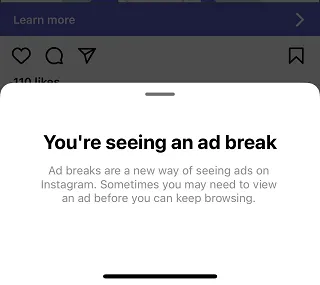Instagram is experimenting with a new video ad format that halts users from scrolling in the main feed until they’ve viewed the ad. These in-feed ad units come with a timer at the bottom, as seen in an example shared by photographer Dan Levy, and users cannot scroll past the ad until the timer runs out.

According to Instagram, these ads must be viewed before users can continue scrolling, making them essentially unskippable video ads in Instagram’s format. Predictably, this development has not been well-received by Instagram users.

Unskippable video ads on platforms like YouTube have long been a significant reason for the widespread use of ad blockers. These forced-view ads are often cited as highly disruptive and frustrating, especially when the ads are irrelevant to the viewer. Despite advancements in digital ad targeting, it remains challenging to consistently display the right ad to the right user, leading to frequent exposure to irrelevant promotions.
From a brand perspective, these unskippable ads offer benefits in terms of guaranteed exposure and timed placement. However, the user experience is likely to suffer as a result.
Motivation Behind the Move
With Instagram’s main feed now heavily populated with AI-recommended content from profiles that users do not follow, primarily short-form Reels video clips, Meta sees an opportunity to insert more promotions. Since half of the content in users’ feeds comes from profiles they don’t follow, additional ads within this stream might not be as jarring.
However, the aspect of stopping the user’s scroll is controversial. YouTube’s unskippable ads are notorious for being annoying, leading the platform to implement measures to prevent the use of ad blockers.
The Risk and Reward
For Meta’s ad business, if these unskippable ads prove effective, the potential revenue boost could outweigh user dissatisfaction. Nonetheless, this strategy carries significant risk, as it may drive users away due to the frustration of being forced to watch ads.
Conclusion
The new ad format is still in the testing phase, and its broader implementation will depend on user reception and effectiveness. Instagram has yet to provide detailed information on the scope of this test or future rollout plans.
Source: Social Media Today





